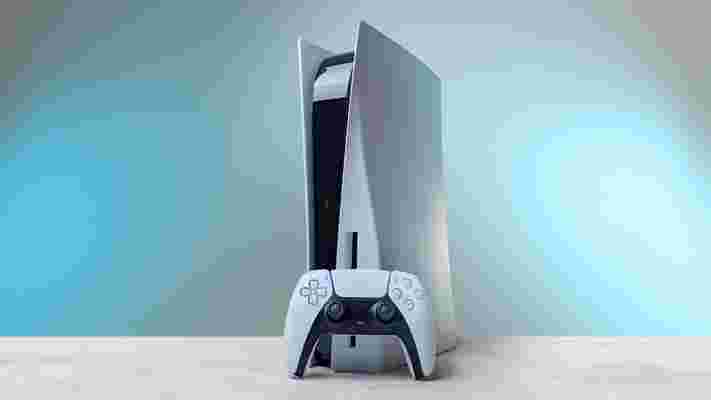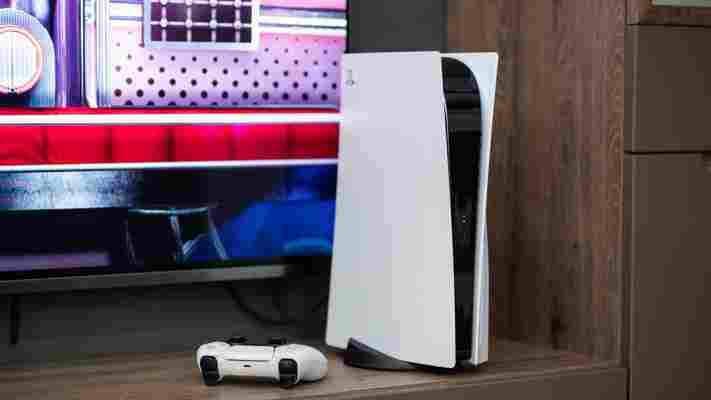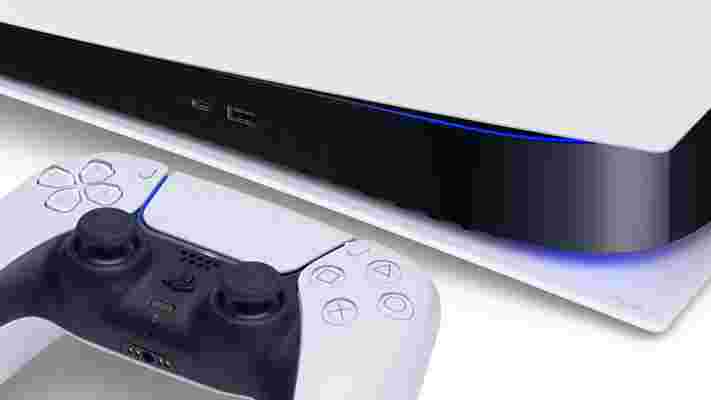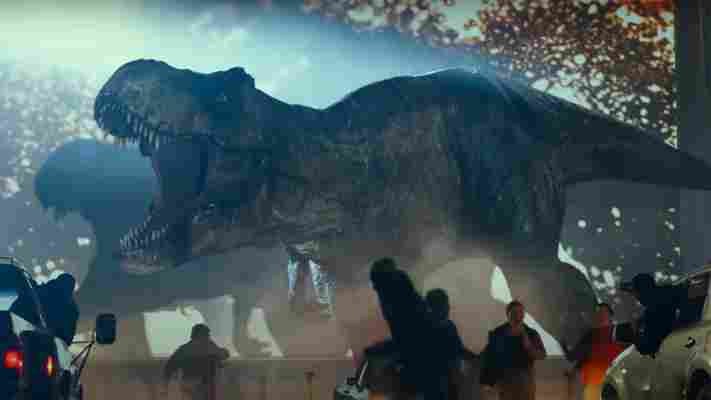There's a strong chance we’ll see a PS5 Pro at some point in the future, but what can we expect from a more powerful PlayStation 5?
Sony kickstarted the trend of releasing mid-gen console upgrades during the PlayStation 4 generation with the PS4 Pro back in 2016 – a more technologically advanced system that was capable of 4K visuals and higher frame rates.
The PS4 Pro was successful enough that Microsoft followed suit with its own mid-gen console refresh a year later, the Xbox One X and, much like the PS4 Pro, the Xbox One X trumped the original Xbox One in almost every department.
Nintendo has always had a habit of releasing upgraded hardware during a console generation, though the company tends to refine an existing design as opposed to making something more powerful. The Nintendo DS Lite, New Nintendo 3DS , and Nintendo Switch OLED are all recent examples of Nintendo making improvements to its original hardware but not overhauling the technical specs to any notable degree.
The PS5 may be only approaching its year and a half anniversary on sale, then, but that doesn’t mean Sony isn't drawing up plans to release a more capable model in the coming years. It’s unclear right now exactly what a PS5 Pro could improve upon, though – we still haven’t seen any 8K resolution support on PlayStation 5 as of yet, and we’ll have to wait for a PS5 Slim if we want to see a noticeably smaller console.
Still, it’s always fun to speculate and round up all the rumors, so let’s deep dive into the possibility of a PS5 Pro and make a few predictions along the way.
PS5 Pro price and release date

We can make an educated guess as to when the PS5 Pro will be released along with its price based on what Sony did with the PS4 Pro. The PS4 Pro launched in 2016, which was three years after the original PS4 came out. That means we could see a PS5 Pro release as early as 2023, then, as the PS5 launched in November 2020. However, the Covid-19 pandemic and ongoing component shortages could push a PS5 Pro launch well into 2024 or beyond.
In terms of price, the PS4 Pro launched at the same price point as the original PS4, which was $399 / £349. The PS5 costs $499 / £449, so it’s likely that Sony could offer the PS5 Pro for the same price point if it follows the same strategy as it did for PS4 Pro.
PS5 Pro design

The PS5 is already a gargantuan machine, which means that unless Sony can make drastic improvements, a PS5 Pro could match or even exceed the size of a regular PlayStation 5. We saw a similar situation occur with the PS4 Pro, which was bigger than the original PlayStation 4 by some margin. Thankfully, a PS5 Slim will likely be available around the same time for those who really want a smaller system.
We imagine that, much like the PlayStation 4 Pro, Sony’s design will build upon the existing futuristic look of the console, but could include some additional flourishes that aren’t present on the current system.
PS5 Pro specs

This is where things get a lot less easy to predict. The PS5 is already an extremely powerful console, capable of 4K gaming at 120Hz in specific titles, ray tracing, and generally sumptuous visuals across the board. A PS5 Pro would certainly help developers hit even higher resolutions and frame rates, but it’s unlikely to represent a tangible leap like we saw going from 1080p to 4K.
However, with the PS5 still unable to output any games at 8K, despite the feature being advertised on the console’s retail box, perhaps the PS5 Pro will target the next-gen resolution standard.
8K isn’t widespread right now, but in three years’ time, 8K panels will likely have become more affordable and accessible to non-enthusiast consumers. Let’s not forget that Sony also manufactures TVs, and the Japanese company might want to use the PS5 Pro to push sales of its 8K sets, much like it used the PS3 to help win the disc format war with Blu-Ray.
The PS5 Pro could sport an AMD Zen 4 CPU and RDNA-3 GPU, but we’ve seen that both Microsoft and Sony decided to go with a slightly souped version of the Xbox One and PS4 CPUs in its upgraded models, so we’d expect to see more investment in the GPU than the CPU with the PS5 Pro.
But what else could the PS5 Pro offer? We’d expect the PS5 Pro to include a larger SSD over the original PS5, too, as 825GB wasn’t exactly a generous amount to begin with. A 1TB version would certainly help add more value, and we’d expect the ability to install one of the best SSD for PS5 to remain.
And what of a PS5 Pro Digital Edition? Will Sony also release a version without a disc drive? Maybe not. The PS5 Digital Edition serves as a cheaper alternative to the PS5 for those who are happy to go without, but releasing two versions of the PS5 Pro, which admittedly won’t appeal to everyone, would probably be a bit frivolous.
Sony LinkBuds vs Sony WF-1000XM4: how the true wireless earbuds compare
Sony has garnered a reputation for making the best true wireless earbuds you can buy today, combining excellent audio quality with extra features like touch-sensitive controls and active noise cancellation at a competitive price.
The Sony WF-1000XM4 are our favorite wireless earbuds on the market, having launched in 2021 with many of the same features as the over-ear WH-1000XM4 .
Since then, Sony has released a new pair of wireless earbuds - and they’re very different from the WF-1000XM4. The Sony LinkBuds are the strangest in-ear headphones we’ve ever seen, with a ring-shaped open driver design that leaves your ear canals totally exposed.
Unlike the WF-1000XM4, the Sony LinkBuds are designed to be worn all day long, allowing you to hear your surroundings while you enjoy your music, take calls or listen to podcasts . The company took a big gamble on this unique design, but we think the risk has paid off.
Both the Sony WF-1000XM4 and the LinkBuds are excellent examples of how far true wireless earbuds have come in the last few years, and we’d happily recommend either model. Unfortunately, that makes choosing between the two quite difficult.
That’s why we’ve taken a deep dive into the Sony WF-1000XM4 and the LinkBuds to see how they compare. Here’s everything you need to know about how Sony’s best earbuds stack up against its strangest.

Sony LinkBuds vs Sony WF-1000XM4: price and availability
The Sony LinkBuds are available to buy now for $179 / £149 / AU$299, having been launched on February 15, 2022.
That makes them the cheaper option compared to the Sony WF-1000XM4, which cost $279.99 / £250 / AU$449.95 when they were released in 2021. Deals are sometimes available, but WF-1000XM4 discounts are usually pretty modest.
If you’re looking for a real bargain, look out for deals on the Sony WF-1000XM3 - or check out some of Sony’s cheaper in-ear headphones like the WF-C500 , which cost $79 / £89 / AU$149.95.

Sony LinkBuds vs Sony WF-1000XM4: design
Both the Sony LinkBuds and the WF-1000XM4 are true wireless earbuds, with no cable between each earbud. A charging case tops up the battery while keeping the earbuds themselves safe.
True wireless earbuds tend to fall in one of two camps; those with protruding stems like the Apple AirPods Pro , and those without. However, the Sony LinkBuds don’t look like any wireless earbuds we’ve seen before.
That’s because the Sony LinkBuds are the first in-ear headphones to feature an open design that leaves your ears free to hear the world around you. Traditional earbuds block the ear canals, but the LinkBuds’ ring-shaped drivers keep the ear canals uncovered.
Those ring-shaped drivers are connected to rounded housings in a figure of eight-style configuration. The housings rest in the concha of your ears, held in place by rubber fins, which come in a range of sizes.

Although the LinkBuds are far smaller than the Sony WF-1000XM4, we didn’t find them as comfortable. That’s not a reflection of poor design, however - our ears just don’t get on with this particular form factor.
The Sony WF-1000XM4 and their charging case look rather large by comparison, with flat, circular housings connected to polyurethane ear tips.
Both models come with an IPX4 water-resistance rating, which means they can withstand a little sweat or rain, making them suitable for use while working out. The LinkBuds and the WF-1000XM4 also both come in black or silver color options, and feature paper-based recycled packaging. The LinkBuds take the eco-friendly credentials one step further and are partially made from recycled car parts.
Sony LinkBuds vs Sony WF-1000XM4: controls and setup
Both the Sony LinkBuds and the Sony WF-1000XM4 come with touch-sensitive controls, allowing you to tap the housings of the earbuds to control your music playback, accept calls, and summon your device’s voice assistant.
However, the LinkBuds have a few extra tricks up their sleeve. As they’re so small, tapping the LinkBuds’ housings accurately can be difficult so Sony has implemented a feature it calls Wide Area Tap.
This ingenious feature means you can tap the area in front of your ears to control the LinkBuds - that’s right, you just need to tap your face to play / pause your music or skip to the next track.
These controls can be reconfigured to your liking in the Sony Headphones Connect app - whichis where you’ll set up both the WF-1000XM4 and the LinkBuds when you first use them.
The app is feature-rich, allowing you to easily customize your earbuds, check on your battery life, download updates, and toggle EQ and noise cancellation settings.
The level of personalization you get with the app is great, and in the case of the LinkBuds, you even get a handy animation that shows you how to wear them properly. You can also enable Sony’s 360 Reality Audio technology in the Headphones Connect app, which requires you to take a photo of each ear. The app then analyzes your ear shape for an immersive sound that’s tailored to you.
Sony LinkBuds vs Sony WF-1000XM4: audio performance
Both the Sony LinkBuds and the Sony WF-1000XM4 offer exceptional audio performances, with support for the company’s DSEE upscaling technology, automatic pausing when you remove your earbuds, and 360 Reality Audio , which allows for immersive virtual surround sound.
The LinkBuds in particular provide a remarkably wide soundstage, with the open-fit 12mm ring drivers creating an expansive sound that allows every instrument in your favorite songs to shine.
That open design means you don’t get the powerful bass response offered by earbuds that create a strong seal against the ear canal; however, the LinkBuds are so well-balanced that the mids and trebles don’t sound bloated in comparison to the lower frequencies.
The Sony WF-1000XM4 provide a more bass-heavy sound but don’t sound quite as expansive. You still get excellent dynamism and control though, with both the XM4 and the LinkBuds providing high levels of detail and rhythmic accuracy.
You may find that the Sony WF-1000XM4 sound more immersive thanks to their physical seal against the outside world and active noise cancellation technology, which blocks out the sound of your environment. The WF-1000XM4 also come with support for hi-res audio via Sony’s LDAC codec. DSEE may upscale music played on the LinkBuds to ‘near’ hi-res quality, but it’s not the same as true 24-bit / 192kHZ streams.
There’s no noise cancellation (physical or active) on offer with the LinkBuds; these earbuds are designed to be worn all day long, allowing you to hear what’s going on around you while you listen to music.
Sony LinkBuds vs Sony WF-1000XM4: battery life and connectivity
Of the two models, the Sony WF-1000XM4 come with the longest battery life. You get 24 hours in total, with 8-12 hours of playback provided by the earbuds themselves. If you have active noise cancellation turned on, you can expect a shorter battery life.
The LinkBuds only offer 17.5 hours of battery life; that’s 5.5 hours from the earbuds and a further 12 hours from the charging case. The Sony Headphones Connect App also warns that battery life could be lower if you have features like Speak-to-Chat, DSEE, and Adaptive Volume Control all turned on at once.
While the LinkBuds and the WF-1000XM4 both support Quick Charging, which lets you top the earbuds up rapidly when you’re in a hurry, only the WF-1000XM4 comes with support for wireless charging.
Both models come with Bluetooth 5.2 connectivity, which provides a stable connection with your devices. We found that the LinkBuds sometimes dropped out when we left our phone in another room - physical barriers like walls can interfere with Bluetooth, but the issue seemed particularly prominent with the LinkBuds.
Neither model comes with multipoint connectivity for quickly switching between playback devices; that’s a shame, considering how comprehensively specced both Sony earbuds are.
Takeaway
If you’re trying to choose between the Sony LinkBuds and the WF-1000XM4, your first question should be ‘how do I intend to use my new earbuds?’.
For anyone that wants a pair of true wireless earbuds that can be worn all day to listen to music, take calls, and enjoy podcasts, the LinkBuds give you flexibility of an open design along with an exceptional audio performance. The unique build will also appeal to anyone that wants to try something new.
However, if you want to block out the world around you as you listen to music, the Sony WF-1000XM4 are your best bet, offering great active noise cancellation and an immersive sound that’ll let you get the best out of your music. Plus, they come with hi-res audio support so you can enjoy high-quality music streams.
If you want wireless charging support, you should also opt for the WF-1000XM4 - and the longer battery life will suit anyone who frequently forgets to top up their wireless earbuds.
In the end, your decision may come down to price - and in this respect, the LinkBuds are the clear winners, costing $100 / £100 / AU$150 less than their noise-canceling counterparts. There are plenty of cheaper earbuds on the market if the LinkBuds are still too pricey; for instance, the 2019 AirPods are frequently discounted these days and offer lots of similar features - though Apple’s earbuds can’t compete with Sony’s when it comes to audio quality.
Jurassic World: Dominion: release date, cast, trailer and everything we know
The popular dinosaur saga has evolved. In Jurassic World: Dominion, the sequel to 2018's Jurassic World: Fallen Kingdom, the infamous prehistoric monsters have escaped into the wild, meaning the human race has to learn how to live on a planet with creatures that died out 65 million years earlier. We'll give you three guesses as to how well this will work out.
Jurassic World: Dominion also marks the end of a trilogy that began with 2015’s Jurassic World, and will complete the story that iconic filmmaker Steven Spielberg began nearly 30 years ago with his ground-breaking adaptation of Michael Crichton’s bestselling novel.
To mark the occasion, writer-director Colin Trevorrow has invited back original stars Sam Neill, Laura Dern and Jeff Goldblum to walk with dinosaurs once again. And, while there’s no theme park this time, Jurassic World: Dominion still promises to be one hell of a ride – an epic finale to a series big enough to compete with the most successful blockbuster franchises of all time, including the Marvel Cinematic Universe , Star Wars and Harry Potter .
Below, we've dug up every piece of information we can find on Jurassic World: Dominion, such as its release date, all-star ensemble cast, trailers and more. We've provided a brief rundown of the main points below but, if you want a more thorough examination of the film before it makes its way into theaters, you should carry on reading.
Release date: Jurassic World: Dominion will stomp its way into theaters on June 10, 2022.
Story: After a myriad of dinosaurs were set free in the final act of 2018’s Fallen Kingdom, the human race is coming to terms with a world where giant creatures roam the landscape once more. Can humanity survive? Or are we doomed to become prey for a legion of ever-more fearsome creators?
Cast: Chris Pratt and Bryce Dallas Howard reprise their roles as Jurassic World leads Owen Grady and Claire Dearing, but the main headline is the return of original Jurassic Park stars Sam Neill, Laura Dern and Jeff Goldblum.
Jurassic World: Dominion release date: June 2022

Jurassic World: Dominion is currently scheduled to land in theaters worldwide on June 10, 2022 .
Having been mapped out alongside the first Jurassic World movie – and started its shoot just before the world went into the first pandemic-induced lockdown – the final instalment of the Jurassic World trilogy feels like it’s been almost 65 million years in the making.
Nonetheless, after a four-month hiatus between March and July 2020, the film was one of the first blockbusters to go back into production, with cast and crew going into collective isolation in a hotel complex to keep Covid-19 at bay. Inevitably, the production delay affected Jurassic World: Dominion's release date, pushing it back a year from its original June 2021 berth.
Director Colin Trevorrow (the Jurassic World helmer back behind the camera after handing the Fallen Kingdom reins to J.A. Bayona) believes some positives emerged from the extra time added to the schedule, though, telling Empire magazine: "It was nice to have the time to make sure that every character is honored in the way that they need to be."
Jurassic World: Dominion trailer
After teasing hungry fans with short film ‘Battle at Big Rock’ and a prologue sequences, the trailer for Jurassic World was finally released on February 10.
The trailer opens somewhere icy and cold with a herd of parasaurolophus on the charge. Quickly, we see Chris Pratt's Owen Grady riding one of the beasts like he's galloping through the old West, accompanied by a couple of other riders in cowboy hats. As they ride, Richard Attenborough's famous speech as John Hammond from the original Jurassic Park plays over the top.
In the same location, we begin to see other dinosaurs, as well as Maisie Lockwood, the granddaughter of Benjamin Lockwood, the partner of John Hammond in creation of Jurassic Park and company InGen. We last saw Maisie escaping with Grady and Bryce Dallas Howard's Claire Dearing at the end of Jurassic World: Fallen Kingdom.
Next we see Blue, the velociraptor with whom Grady had such a bond in Jurassic World. She's living alongside Grady, Dearing, Maisie and a whole other group of people, and is now a mother.
What plays out next is some of the collateral damage of having dinosaurs roaming the Earth, including a spectacular appearance of T-Rex at a drive-in cinema.
Then we meet Laura Dern's Ellie Sattler, who recruits Sam Neill's Alan Grant to return for one last job. Jeff Goldblum's Dr. Ian Malcolm is next, who tells us that humanity is losing the battle with dinosaurs
"Human and dinosaurs can’t coexist. We created an ecological disaster", Dern's Sattler warns, while Goldblum adds: "We not only lack dominion over nature, we’re subordinate to it."
What follows now is a series of spectacular confrontations between humans and dinosaurs. We see Dearing hiding underwater to avoid detection, Pratt pursued by raptors through a sunny European capital on a motorbike, and finally Grady, Dearing and DeWanda Wise's newcomer Kayla fly a military plane, which is set upon by a vicious pterodactyl.
At the trailer's climax, the cast new and old have united to face down what looks like the series' biggest dinosaur yet...
Isn't there a short film and a prologue too?
Indeed there are. Back in 2019, distributors Universal debuted 10-minute short film ‘Battle at Big Rock’. Directed by Trevorrow – he also penned the script with Dominion co-writer Emily Carmichael – the short film focused on a family whose RV ends up parked in the middle of a fight between a hungry Allosaurus and a group of herbivorous Nasutoceratops.
Just as tantalizing as the dino-on-dino action, however, are the hints of what life is like for humans who now find themselves living in a literal Jurassic World – it’s worth sticking around through the credits when you watch it on YouTube.
Adding to the prehistoric carnage, IMAX screenings of Fast & Furious 9 were preceded by a five-minute prologue sequence, which you can view below:
Before the trailer's release, it gave us plenty to sink our teeth into. "I'm grateful that Universal and everybody were down with doing it," Trevorrow explained to ScreenRant . "Because it’s not just like we're showing the first five minutes; we’re showing a pretty major piece of what we're doing."
The prologue starts with a genuine first for the Jurassic movies – a flashback to the Cretaceous period, showing dinosaurs in their natural habitat. Alongside herds of familiar species such as Triceratops, we see franchise newcomers like the giant winged Quetzalcoatlus, and the series’ first ever dinosaur with feathers. "I feel like that [the Oviraptor is] going to be a bit of a headline for those who care about paleontological accuracy," Trevorrow told Empire 's February 2022 issue.
From a dramatic point of view, the prologue serves as an origin story for one of the mainstays of the saga – the Tyrannosaurus Rex. In the footage we get to see the original T-Rex being killed by the even more formidable Giganotosaurus, before the most famous mosquito in cinema history sucks the blood that will be used to clone the predator some 65 million years later.
"I wanted to really put into visual terms this story that we've been told for 30 years about how dinosaurs were made from DNA fossilized in amber," the director added in his Empire interview.
After showcasing the famous bug, the sequence immediately cuts to the present day, where we see a T-Rex being hunted once again – but, this time, the pursuer is a helicopter full of humans with guns. Unfortunately for everyone involved, the T-Rex runs into a packed drive-in movie theater; another reminder of how civilization will have had to adapt to giant beasts roaming the Earth again.
Jurassic World: Dominion cast: who’s facing up to the dinos?

Here's the full cast list for Jurassic World: Dominion:
Assuming the character appeared in a previous movie and hasn’t already been eaten by a dinosaur, there’s a good chance they’ll be returning.
It’s no surprise, then, to see Jurassic World and Jurassic World: Fallen Kingdom leads back once more: Chris Pratt as raptor expert Owen Grady, and Jurassic World manager-turned-dino rights activist Claire Dearing (Bryce Dallas Howard). Here's Pratt in action in a photo posted by Entertainment Weekly:
The much bigger news, though, is the return of original Jurassic Park stars Sam Neill, Laura Dern and Jeff Goldblum, as scientists Dr. Alan Grant, Dr. Ellie Satler and Dr. Ian Malcolm respectively.
Although Goldblum and Neill reprised their roles in the second and third Jurassic Park movies – Goldblum also cameoed in Fallen Kingdom – this is the first time the original triumvirate have appeared on screen together since the original movie. Trevorrow told Empire that the reunion was such a big deal that even Steven Spielberg "got very emotional" when he saw a photo of the three stars on set.
The three veterans of the original theme park haven’t just signed up for glorified cameos, either. As Trevorrow told Collider in June 2021: "Laura, Sam and Jeff are just as big a part of the movie as Chris and Bryce are, as far as screen time, as far as their importance to the story, everything [goes]."
Beyond the headline cast, BD Wong – who also showed up in Netflix's animated Jurassic Park spin-off series Camp Cretaceous – is back for his fourth movie appearance as Dr. Henry Wu, the morally flexible scientist behind InGen, the bioengineering company set up by John Hammond in the original movie.
Also continuing their stories from Fallen Kingdom are Isabella Sermon as kid-clone Maisie Lockwood (confirmed by a photo Trevorrow posted on Twitter ), while Daniella Pineda and Justice Smith are back as Claire’s associates from the Dinosaur Protection Group – paleo-veterinarian Zia Rodriguez and computer whiz Franklin Webb. Lupin ’s Omar Sy, who plays Owen’s raptor-training sidekick Barry Sembène, is also back for more dino action.
Although The Hollywood Reporter reported, back in February 2020, that New Girl’s Jake Johnson (IT guru Lowery Cruthers) would also reprise his role from Jurassic World, Johnson has since departed the movie. ScreenRant reported that Covid-induced scheduling conflicts were to blame.
There are a few franchise newbies, too. Sorry for Your Loss’s Mamoudou Athie, She’s Gotta Have It’s DeWanda Wise, Altered Carbon’s Dichen Lachman, Antlers’ Scott Haze, and Rambo: Last Blood's Dimitri Thivaios have all joined the Jurassic World: Dominion cast.
The most intriguing 'new' recruit, however, is playing a character when the saga began back in 1993. Lewis Dodgson (originally played by Cameron Thor) was the representative of InGen’s corporate rivals, BioSyn, who asked computer nerd Dennis Nedry to smuggle dinosaur embryos out of the original Jurassic Park.
Although Dodgson was a major antagonist in both of Michael Crichton’s Jurassic Park novels, he’s not appeared on screen since. Now reportedly the CEO of BioSyn, he’ll be played by Singles and Roger Dodger star Campbell Scott. "He is the main villain throughout both of [Crichton's] novels," Trevorrow told Entertainment Weekly . "And I think what Campbell's done with the character is just amazing." We wonder if Dodgson will be that mysterious antagonist we mentioned earlier...
It also goes without saying that there’ll be plenty of new dinosaurs, including the Velociraptor’s "more brutish" cousin the Atrociraptor, and fellow meat eater the Moros Intrepidus. The latter was only identified as a species in 2019, so nobody can claim Jurassic World: Dominion isn’t up to date with its ferocious creatures.
Jurassic World: Dominion story: what's it about?

If the unplanned dinosaur rampage of 2015’s Jurassic World turned a prehistoric theme park into a problematic business proposition, the island-levelling volcanic eruption of 2018 sequel Fallen Kingdom killed it outright. The Jurassic World: Dominion story will therefore have to go in a different direction to its predecessors.
Luckily, Fallen Kingdom provided the perfect starting point. When Owen and Claire freed all those dinosaurs from the Lockwood mansion's basement, they introduced extinct creatures into the ecosystem of 21st century Earth, and subsequently shifted the dynamic of not only the 28-year-old franchise, but also life as we know it.
We now have an official synopsis for the movie, which reads as follows: "Jurassic World: Dominion takes place four years after Isla Nublar has been destroyed. Dinosaurs now live—and hunt—alongside humans all over the world. This fragile balance will reshape the future and determine, once and for all, whether human beings are to remain the apex predators on a planet they now share with history’s most fearsome creatures."
This sit alongside what Colin Trevorrow had to say in a showreel unveiled at CinemaCon in August 2021 (reported by ScreenRant ), where he said: "The movie will present the question: ‘If dinosaurs lived amongst us, would you be safe?’ The answer is no."
It seems pretty likely that the finale of Jurassic World: Dominion will bring down the curtain on this trilogy, with Trevorrow seeing it as "a culmination of one story” that’s been told throughout the six Jurassic movies."
"What was important for me was, when you watch Dominion, you really feel like you are learning how much of a story that first set of [Jurassic Park] movies was," he told Entertainment Weekly . "Everything that happened in those movies actually informs what ultimately is able to happen in this. If kids who are born today are going to be presented with six Jurassic Park movies, you hope they are going to get to feel like they watch one long story."
This new film won’t necessarily mark the end of dinosaurs roaming the Earth, however – in fact, the Jurassic World: Dominion story may just be the beginning.
"It’s the start of a new era," producer Frank Marshall countered when Collider asked if Dominion was the end of the franchise. "The dinosaurs are now on the mainland amongst us, and they will be for quite some time, I hope."
As Marvel Studios' cinematic juggernaut, Star Wars' unending projects and other film franchises have taught us, film series are here to stay. Duologies, trilogies and even quadrilogies are largely a thing of the past now, with the world's biggest studios looking to make boatloads of cash from cinemagoers who can't get enough of more of the same films.
Jurassic Park, then, much like its inspirational dinosaurs, is here for the long haul. Providing that the series doesn't re-tread old ground or lose audience appeal, we can expect more entries in the future. It would be a shame if the franchise was confined to the annals of history – after all, dinosaurs are cool – but much will depend on whether viewers continue to have an appetite for dinos duking it out on the big screen.